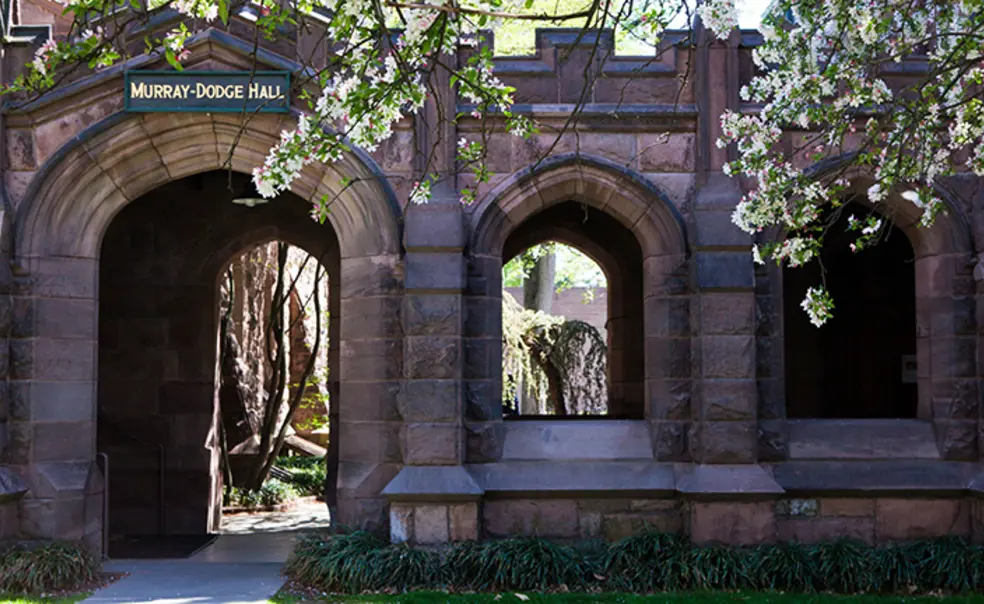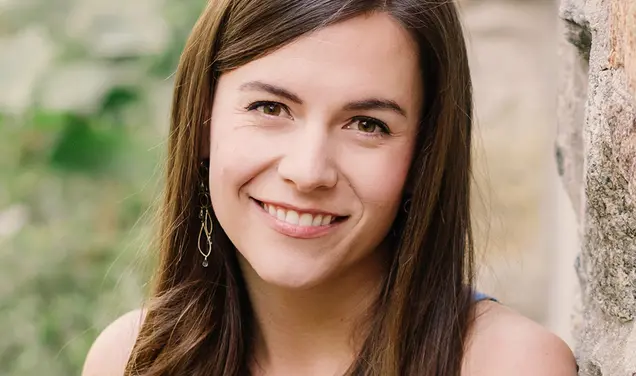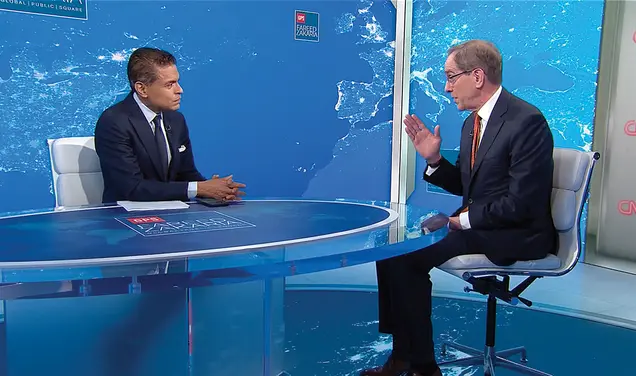Rally ’Round the Cannon: Intimations
To keep my creativity alive and fresh, I have to pretend that no one is watching the show, that there are no audiences, there are no ratings; I’m just telling a story.
— Shonda Rhimes
Having examined the upset to alums during the pandemic almost-past, it seems only fair to heed our figurehead Santayana and note for the sake of future improvement the tribulations of the students during COVID as well. The high school students of 2020-22 (an unscientific self-selection of whom we alums interview for Princeton) were buffeted daily, “completing” their own virtual studies on a wing and a prayer while often caring for younger siblings at home. Only in rare cases were non-curricular activities even partially salvaged for over a year.
While colleges had more resources to throw into the fray, the complexity of the courses and the sudden displacement of many of the students layered huge additional impediments on top of the pile, and inevitably those resources were brought to bear on thorny academic conundra obstructing students’ process toward their degrees. And so the extracurriculars got (you guessed it) plenty of sympathy, period, and that only on a good day, i.e. never. And by the happenstance of their logistics, some of them were far more impeded than others. WPRB’s entire broadcast operations plant in Bloomberg Hall was instantly unavailable, while the FCC requirement to stay on the air remained. Their remaining tools were the transmitters and antenna at Baker’s Basin and a hundred or so personal student laptops. It worked. The Glee Club and a cappella groups had contiguity problems no funding or PC could solve — recall, one of the first documented superspreader events in the country was a choir rehearsal in Washington state. They stayed in touch, but normal operations essentially ceased.
That brings us to our tale for the day, which in this case has a name: Hamilton Murray Theater, the physical lifeblood of Theatre Intime, which could be pictured in the dictionary under “COVID hazmat site.” The group did some very clever virtual productions but couldn’t stage an in-person show for more than a year. So that’s why the Intime faithful are gathering this month to celebrate the 100th birthday of Murray Theater — one year late. In the fall of 1921, less than two years after the group’s founding, the instant hotbed for both existing plays and new student-authored productions had a home (previously an obsolete weekday chapel convenient to the religious groups next door in Dodge Hall) which it has used essentially around the clock and across the calendar ever since. Although refurbished from time to time, this jewel box of the campus remains the modest crucible for art it has always been, with the night’s cast and 200 or so audience members trading inspiration while close enough to examine each other’s dental work if the need arises.
The 1920 campus atmosphere was perfect for the rise of Le Theatre Intime (the “Le” disappeared almost instantly), with students newly attuned to broader cultural issues through both the European War and an English literature faculty that had arisen almost fully formed overnight when the preceptor guys descended on the brand-new English department in 1905. Seven of the 50 preceptors were in English, becoming the core of a broadly talented teaching department that was one of the first at Princeton to offer a full slate of grad school courses in addition to instructing the undergrads and attracting such celebrity fellows as Alfred Noyes, the British poet we visited earlier.
In 1919, popular professor Donald Clive Stuart was named the first professor of dramatic arts; he became an adviser to Triangle, which began its golden age, including construction of McCarter Theater and continuing through the ’30s of Jose Ferrer ’33, Jimmy Stewart ’32, and Brooks Bowman ’36. But, as today, the annual musical comedy operation of Triangle was not completely satisfying to those whose yen was in legitimate theater, or even more exactingly, playwriting.
Stuart was not as directly involved in Intime but served as an inspiration behind the scenes; some student plays from his class were among those first produced there. And so a trio of classmates from the Class of 1921, Ralph Kent, Reginald Lawrence, and Charles Scribner, began presenting student scripts in dorm rooms, then various odd corners of the old University Gym. Claiming the underused and even-then minute Murray Theater got things perking, and in many ways the group never looked back. Producing — from top to bottom and responsible for their own expenses — at least five or six main productions per year plus as many student-written pieces as they could squeeze in, Intime attracted performing artists who had essentially no other outlet save Triangle (crossover members included Eric Barnouw ’29, Josh Logan ’31, and Myron McCormick ’31, among a host of others) while performing such as O’Neill, Shakespeare, Shaw, Marlowe, and Chekov as well as the student scripts.
While Intime percolated, its success was a notable element in the 1939 creation of the Creative Arts Program (by the original campus hero of the arts, Dean Christian Gauss), which also generated sculpture classes under professor Joe Brown. In time, the program not only created opportunities for its alums to come back to teach — the ultimate example being John McPhee ’53 — but to later create a whole range of new initiatives after World War II under the new Humanities Council in 1953. One of the brilliant lights of Intime who was on campus when that happened was Daniel Seltzer ’54, who went on to a successful acting career while earning his Ph.D. and emerging as a noted Shakespeare scholar. After he taught 14 years at Harvard, Princeton lured him back to teach English and theater in 1970, and he became the first director of the new Program in Theater and Dance in 1972, just in time to catch the wave of coeducation and the increase in artistic demand on campus. He created the first course giving credit for production work at Intime, and played Falstaff in one of its Henry V, Part 1 productions. Nominated for a Tony in 1976, he exerted a huge impact on the students before his jarring death from a heart attack in 1979. His infectious energy and intellect are luckily captured in the 1974 Oscar-winning Princeton: A Search for Answers, expressly created to attract a broader and highly inquisitive student body.expressly created to attract a broader and highly inquisitive student body.
The flourishing of the theater and dance program after Seltzer’s grounding was a key building block of the Lewis Centerwhen President Shirley Tilghman and trustee Peter Lewis ’55 took up the banner for the arts in 2005, with the goal of involving every student. Given the new facilities and faculty support, the non-degree theater program now offers dozens of courses — 29 this semester alone — and indirect teaching support not only for Intime, but a dizzying array of student extracurricular groups ranging from TapCats to Quipfire that now populate the campus and an enhanced variety of theatrical stages. Intriguingly, one of the more visible parts of the program is lecturer Mark Nelson ’77, experienced Broadway actor and disciple of Dan Seltzer, who took every course Seltzer taught in the ’70s while also being a star of Theater Intime himself.
Here at History Central we always are suckers for the throughlines of history, the continuing stories that travel across generations, sometimes serendipitously, carrying a focused theme within the ceaseless change that is the oxygen of a great teaching and learning enterprise. The origin story of Theatre Intime, validated and enriched by Dean Gauss’s Creative Arts Program, then further by the Council on the Humanities, then Dan Seltzer’s Program in Theater and Dance until it became a linchpin of the new Lewis Center, is such a tale, but one with a miraculous punchline that sets it apart. For after all this, tiny seminal Murray Theatre still serves as a fun place for knowledgeable theatergoers, and more important a unique training environment for its student creators and managers, imparting priceless lessons old (this month: Shakespeare’s Twelfth Night) and new (in February: Le’Naya Wilkerson ’25’s Autumn Rewind), precisely the intent of Theatre Intime’s student founders when they walked across its narrow threshold 101 years ago. It may now be the 11th largest performing venue on campus, or maybe 18th, or whatever; but I distinctly recall somebody once saying that the play’s the thing.











No responses yet